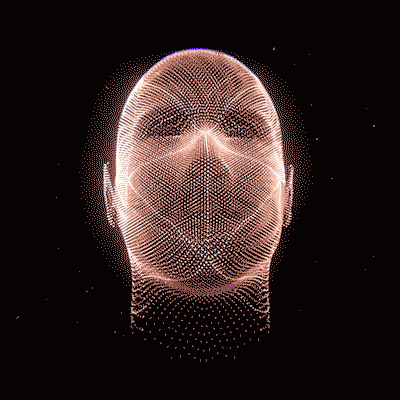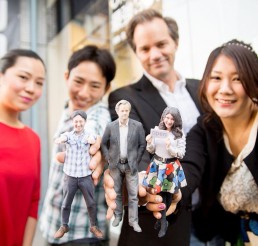3D Culture: a new perspective of life
Three-dimensional experiences can be traced to the early 1900s, experimenting with 3D-filmmaking. Around the same time, the concept of “Culture” as we know it now, started to shape up. Both disciplines were trying to create a vivid representation of an object, a situation or behavior in order to understand it. Scientists use mathematics or physics, while anthropologists use social concepts. More than 100 years passed already and we still trying to figure things out.
Virtual reality, 3D experiences, and three-dimensional selfies are part of the normal, so it’s organic to think about culture in a three-dimensional way, or what I like to call, 3D Culture. Borrowing from concepts from 3D modeling, we could say that it’s possible to create a model of an object (situation/moment). We should be talking about a “multiverse” approach, but let’s move in little steps. I worked plenty with 3D artists, XD designers and collaborated with researchers and analysts on multicultural projects, so inadvertently I became a 3D Cultural Analyst, rendering situations into models, creating a mental sculpture to have a 360 understanding. We model culture using our own algorithms (thoughts and perceptions) shape and texture our objects (experiences) and look at it from many angles (situations). Don’t worry if this doesn’t make sense, keep reading, we are almost there.

Our brain is an organic 3D living scanner, we collect information and data from many sources. We model situations, ideas, actions and behaviours based on new input and within our own archives and mental 3D library of emotions, thoughts, memories, sounds, smells and flavors. We give this objects meaning through texture mapping and create high poly experiences. The result is a beautiful, amazing 3D model of who we are and how we see the world. All in real-time.
This mentally interactive, three-dimensional cultural model reflects and shapes our story and how we behave, on a daily basis. Our ideas, thoughts and beliefs, even the music we listen, the food we like or the books we read are part of our 3D cultural model, shaping our identity and framework to our ‘why we do things the way we do’. And it’s passed down from one generation to the next one.
Culture is wide and filled with many layers, and naturally we tend to simplify things pre-modeled objects, royalty free-ideas of what something means. Words come with a significant amount of conceptual baggage. For example, think of the word “Argentina”. Did your mind conjured images of tango, gauchos and delicious steak?…and what about California…Hollywood and golden beaches? or India (colorful dances, spicy food and Ganesha). Or in reverse, the words ‘fiesta’, ‘nachos’ and ‘5 de mayo’ in a single phrase invoques the idea of Mexico. So wrong on many levels. The reality is that words convey powerful notions of “Argentinean” or “Indian” qualities. How people dress and eat is just part of it, and really a very small indicator of all the symbols, traits, diversity and depth that each amazing and unique culture. Also, culture exists beyond its ‘Wikipedia’ country description. Office buildings, universities, shopping markets, public transportation, coffee shops, anywhere people interact and share the same language, slang, interests and values creates culture: a subculture. They can be united by a music style, a game or a concept, food or sports, uniting complete strangers from around the globed, with opposite cultural into a single hearted vision.

Spoiler Alert! you can’t design for everyone.
But we can focus on a subculture and inspire culture from the inside-out, enabling ambassadors. This shift build space for growth, mixing innovation and design with relevant insights into the deeper layers of cultural behavior. Its an opportunity reinvent and a vibrant playground for talent to make better products and services.
People are people no matter which country you are, and you’ll find interests and tastes as diverse as their inhabitants. From gender identification, tradition, decision-making process and concepts of self. We could try to isolate subcultures using this parameters. Spoiler Alert! you can’t design for a whole culture. Appealing to everyone is a waist of resources and time. What we can is to focus on a subculture, inspiring culture from the inside-out as ambassadors. Become and real influencer. A 3D cultural approach allows us to take a fresh look into situations from various directions and views -like a 3D camera moving around a virtual scenario-. so we can identify opportunities and challenges and had a quick understanding without investing much time.
Subcultures thrive within culture and sharing similar values, beliefs or behaviors, but “updated” to reflect their current life experience. Happens a lot with expats for example, were we adapt our ‘mother-culture’ re-significating to continue cultural survival and cultural evolution. “Tex-Mex”, “Chinese-American” “Techno-Jazz” “Newyorican” are everyday simple examples. You can be Argentinian, speak spanish at home, polish with friends, and english at work Italian father and Argentine mother, raised in Buenos Aires, lived in the US half your life and living in Poland. That’s my crazy 3D cultural model.
3D cultural models are a multi-method approach using traditional tools, ethnographic observation, media investigation, data research, social behaviours and sub-cultural pointers to create a playground to analyse key and relevant findings. highlighted by cultural heritage, geographic momentum and social influences to generate a valuable framework to capitalise cultural-data opening new avenues for further research under the cultural-technological evolution umbrella. 3D cultural modelling gives flexibility to change angles quicker without re-formulating the scene, can easily help us calculate effects and behaviours, and get a subculture estimate with a 360 experience perception. This is not overriding classic techniques but a supportive framework to play with those variables, a view of the world through multiple lenses, from the individual to the collective, creating a storytelling that empowers, encourages and represents people transcending time, culture and language, and finally understanding that diversity is the one true thing we have in common.
